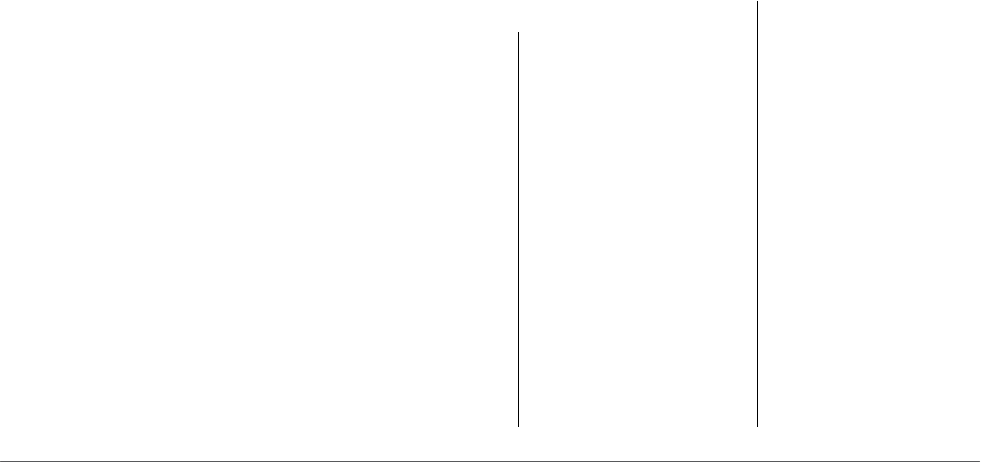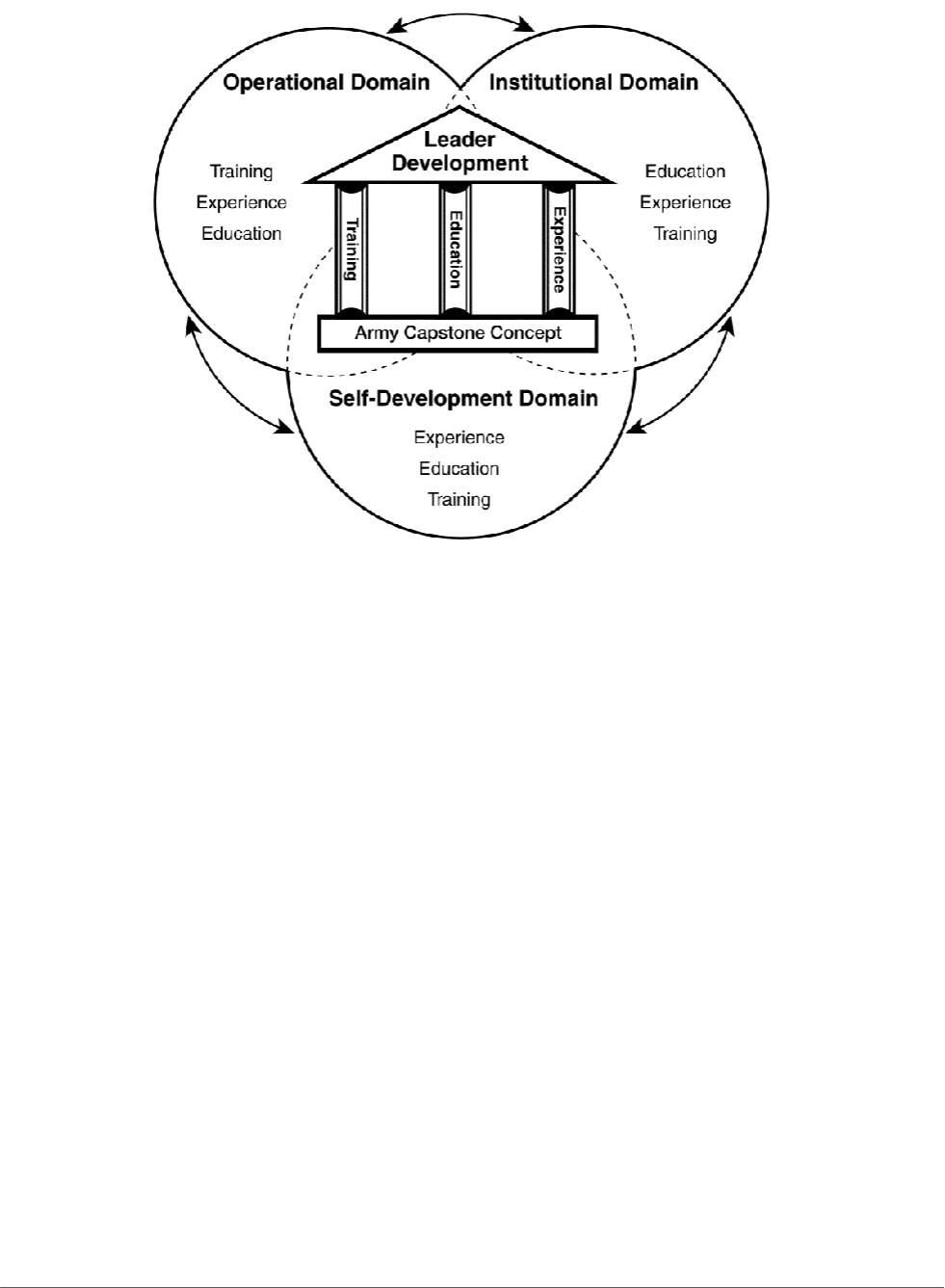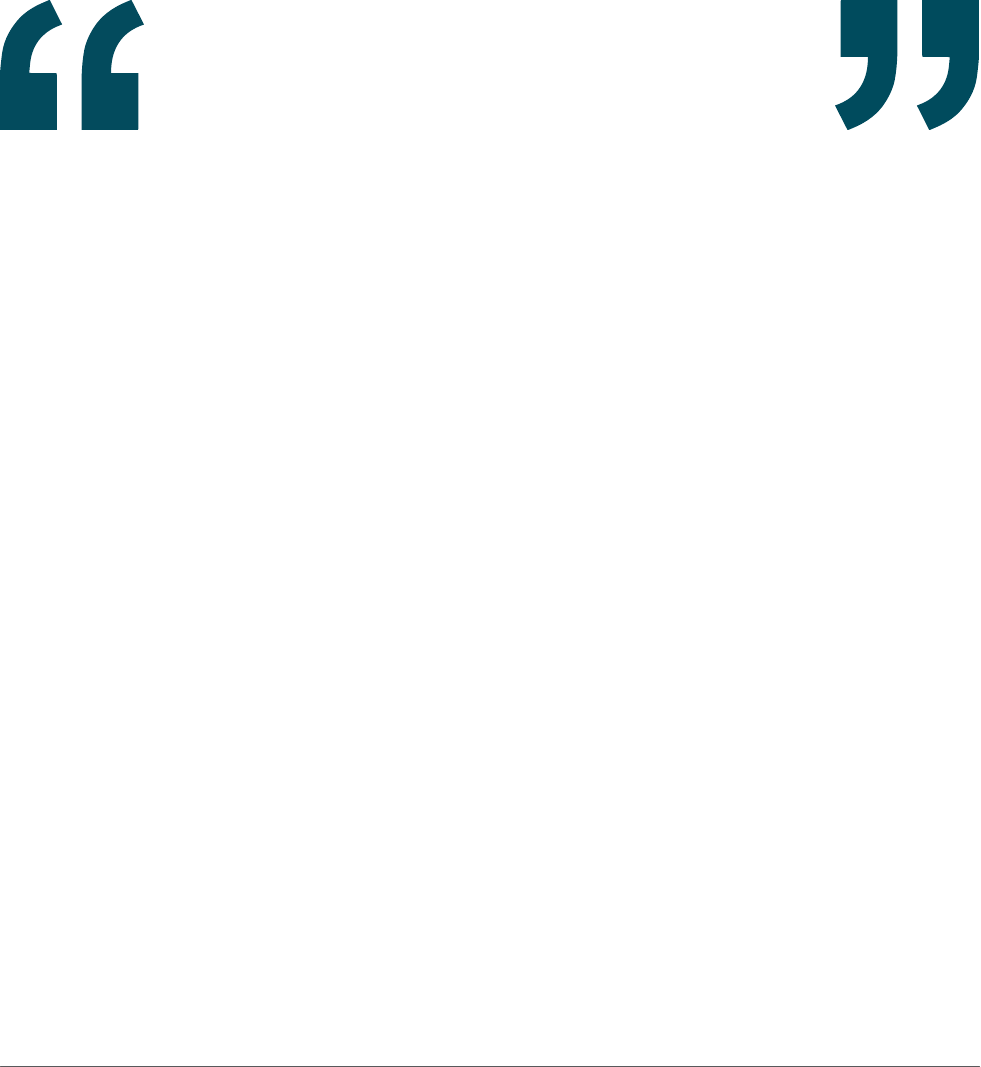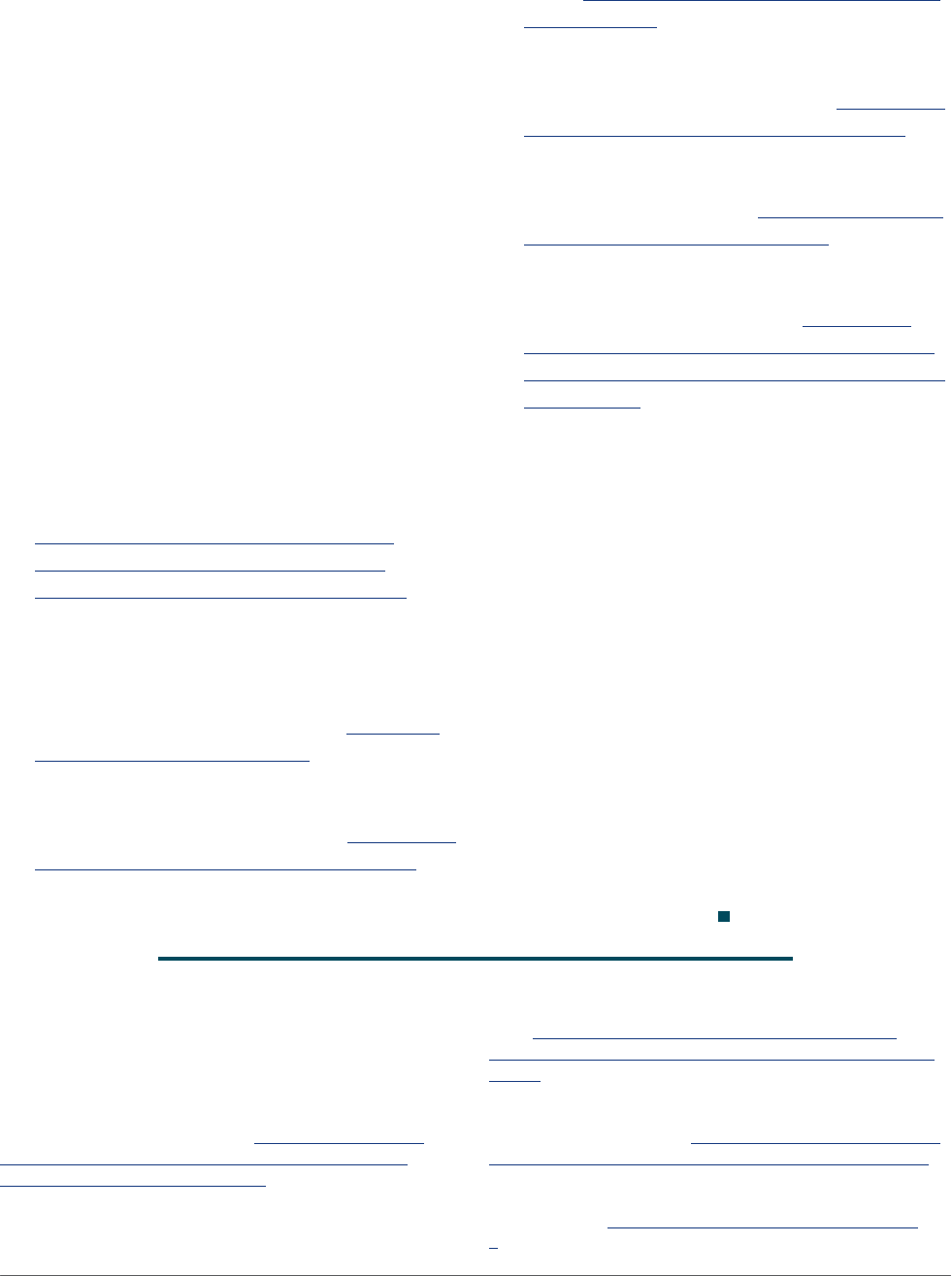
MILITARY REVIEW ONLINE EXCLUSIVE · FEBRUARY 2024
1
Aligning Incentives
Professional Writing in the
Army’s Operational Domain
Lt. Col. Jay Ireland, U.S. Army
Maj. Ryan Van Wie, U.S. Army
C
lear writing is an essential skil for Army leaders—
important to al, regarless of age, rank, branch,
component, or position. It benets soldiers while
serving and is an invaluale tool when transitioning to
civilian life. Using strong writing skils to contribute to
the U.S. Army’s professional dialoue is key to ensuring
a healthy ow of ideas and perectives across the force.
1
Saly, numerous Army pulications have suered in
recent years with decreasing article submissions, reader-
ship, and impact across the force.
2
Senior Army leaders,
including Chief of Sta of the Army (CSA) Gen. Randy
George, recently caled on al soldiers to return to more
intelectual rigor with professional writing, suporting dia-
loue on critical topics in professional Army pulications.
3
e newly launched Harding Project suports the CSA’s
uidance, seeking to reinvigorate U.S. Army professional
journals and making writing venues more accessile for
soldiers across the force.
4
A key to successfuly implementing the CSA’s uidance
is a robust suply of timely, wel-wrien articles from the
operational force. However, writing a professional article
can seem daunting for many soldiers. e nationwide
decline in writing skils is wel-documented, and schools
are less frequently mandating writing courses, including
at West Point.
5
While professional writing courses are fea-
tured in the U.S. Army’s institutional domain, covered in
most professional military schools, a soldier’s writing edu-
cation oen stagnates in the operational domain. e U.S.
Army’s fast-paced operational tempo and profuse tasks
create trade-os for soldiers and leaders who can only ac-
complish so much.
6
Varying education levels and writing
skils create further chalenges for unit leaders who would
like to create a writing development program. Given these
constraints and trends, how can a unit’s leadership develop
and incentivize professional writing in their organization?
is article provides a way for a baalion to opera-
tionalize the CSA’s uidance and cultivate writing skils in
the operational domain. While the Army’s institutional
domain has lead on educating writing skils, we arue that
leaders in the operational domain need to do more to
improve their subordinates’ writing skils in accordance
with the Army’s leader development model (see the
ure). Professional writing deserves a central place in
every unit’s leader development strategy and needs to be
incentivized by commanders. Leaders at echelon can play
an important role in cultivating a subordinate’s writing
skils, creating unit-level writing development programs,
seing reasonale goals, mentoring authors through the
submission process, and most importantly—incentivizing
writing. More plainly, commanders should look to make
professional discourse “cool” in their organizations.
We launched the Mustang Writing Initiative in
January 2023, comprising a series of leader professional
development sessions, working lunches, writing work-
shops, and baalion internal peer-review sessions. With
concerted eort and command emphasis, seven Mustang
authors have pulished articles in professional journals
over the last year. Another six, including ocers and
noncommissioned ocers, have papers submied for
review or papers that are in various stages of development.
is experience shows Army leaders in the operational
domain can play an important role in developing their

PROFESSIONAL WRITING
MILITARY REVIEW ONLINE EXCLUSIVE · FEBRUARY 2024
2
subordinates’ writing skils, fostering beer writers, and
suporting the CSA’s cal to write.
e Mustang Writing Initiative—How
It Started
As we mentioned, creating an eective incentive
structure aligned with professional writing helps produce
results in an era of competing demands on leader time.
What motivated the authors to write? e answer is
simple—we are in a business where the inability to do
one’s job can result in the unnecessary death of soldiers.
Combat experience as junior ocers was central to shap-
ing our professional outlook and worldview. Specicaly,
both of us have experienced a common occurence of
showing up to an area of operations to relieve a unit
from a mission only to realize that the previous team did
not write anything down about best praices or what
they learned. We came to understand the importance
and professional imperative of sharing the answers to the
test, eecialy when that knowledge came at the ex-
pense of soldiers’ lives. Writing serves to formalize those
lessons and memorialize the eorts of the thousands of
soldiers who came before. Units can fal into the trap
of immediately moving to solve a prolem they do not
understand without a professional discourse.
e Mustang Writing Initiative (hereinaer the
Initiative) was initialy pulished in our baalion’s
quarterly training uidance as part of the baalion’s
leader development strategy. e Initiative began as an
optional eort designed to suport any Mustangs inter-
eed in authoring a professional paper. e Initiative’s
expanded purpose was to improve Mustangs’ wrien
communication skils with tailored feeback, peer
review, and senior leader engagement. We deliberately
decided to make participation optional, acknowledging
that professional writing takes time and focus that may
not be availale for al soldiers in our formation.
Given these chalenges associated with professional
writing, we did not mandate pulication in a profes-
sional outlet as the only end state. Pulishing an article
in a U.S. Army journal was not a feasile rst step for
numerous volunteers who needed aditional writing
development. We acknowledged dierent education
levels and writing experiences among Initiative volun-
teers, and we had a broad denition for a “professional
paper.” Instead of only focusing on professional puli-
cations, we encouraged participants also to consider
pulishing an aer aion review (AAR) or a short
white paper intended to be shared across our brigade
and division.
Given an already busy bale rhythm, we conducted
monthly Initiative meetings as a working lunch to max-
imize aendance and limit scheduling conicts. Initial
meetings focused on identifying potential topics, devel-
oping thesis statements, conducting literature reviews,
creating outlines, and leveraging evidence. Aditionaly,
we oered short discussions about writing techniques
from sources such as Dr. Trent Lythgoe’s Profesional
Witing: e Comand and General Sta Coege Witing
Guide.
7
As authors developed outlines and draed pa-
pers, they received tailored feeback on working dras
from one of us (baalion commander or XO), along
with submission advice and recommended next steps.
As the Initiative has evolved, the monthly meetings
now entail the folowing:
•
We briey discuss recent professional pulications of
interest to the 1st Baalion, 8th Cavalry Regiment,
and recommend future reading.
•
Successful authors share their pulication experience
to include thesis development, evidence selection,
research process, outlet selection, and submission
lessons learned.
•
Working dra authors share an update on their proj-
ects, including curent dra status, literature review,
help needed, and goal outlet or product (e.g., AAR or
white paper).
Maj. Ryan C. Van Wie,
U.S. Army, is an infantry
ocer and the executive
ocer of 1st Baalion, 8th
Cavalry Regiment, 2nd
Armored Brigade Combat
Team, 1st Cavalry Division.
He previously served
in the 101st Airborne
Division (Air Assault) and
the 4th Infantry Division.
He holds a BS from the
U.S. Military Academy and
a Master of Public Policy
from the University of
Michigan, Ann Arbor.
Lt. Col. Jay A. Ireland,
U.S. Army, is an armor
ocer and commander of
1st Baalion, 8th Cavalry
Regiment, 2nd Armored
Brigade Combat Team,
1st Cavalry Division. He
previously served in the
1st Armored Division and
the 4th Infantry Division.
He holds a BS from the
U.S. Military Academy and
an MA in geography from
the University of Hawaii,
Manoa.

PROFESSIONAL WRITING
MILITARY REVIEW ONLINE EXCLUSIVE · FEBRUARY 2024
3
•
We close the meeting with an oportunity for new
authors to share project ideas, ask questions, and
receive feeback from the audience on thesis develop-
ment, paper outline, and literature review help.
In total, this monthly working lunch lasts an hour,
and participants are encouraged to schedule folow-on
apointments as needed to receive focused assistance
with any steps in the writing process. On average, over
the last year, each of us inveed aproximately ten
hours into the Mustang Writing per month; those
hours comprised monthly group meetings, one-on-
one meetings, and time ent reviewing dra outlines
and papers. We’ve found this process to be an eec-
tive method to develop our junior writers, educate
participants about the research and writing process,
mentor volunteers through the submission process,
and hold authors accountale for completing dras.
Eleven Mustang authors who used this model over
the last year wrote nine professional articles, three
white papers, and two AARs that contributed to the
U.S. Army’s professional discourse and shared lessons
learned across the force.
In adition to the Initiative, we instituted a require-
ment for the sta duty ocer (SDO) to write an analyt-
ical essay during their twenty-four-hour duty. Using the
division and brigade commander priorities as a uide, we
selected articles for the SDO to read and write a one-page,
single-spaced essay asking the author to explain how the
selected article is relevant to their curent position. e
SDO then sends that essay to the baalion commander,
executive ocer, command sergeant major, and their
commander and rst sergeant. Feeback for the SDO
essay comes in the form of a note from the baalion com-
mander focused on the essay’s substance, the writing, and
recommendations to improve. Mustang ocers serve as
SDO once a month, meaning they wil write twelve essays
a year. e paper is a page in length, requiring ve minutes
to read and another ten minutes to type a response.
What We Learned
Foremost, a unit writing program takes time and
effort. Specificaly, it takes commander energy that is
already short in suply and in high demand. A more
professionalized and intelectualy curious team is
Figure. Army’s Leader Development Model
(Figure from Department of the Army Pamphlet 350-58, Army Leader Development Program)

PROFESSIONAL WRITING
MILITARY REVIEW ONLINE EXCLUSIVE · FEBRUARY 2024
4
more lethal than one that does not engage in an ac-
tive dialoue about more effectively achieving read-
iness. We believe the writing program’s value comes
from the pride attained from completing the rigor-
ous process associated with professional writing and
the camaraderie that comes with working with peers
to make these articles hapen. A successful method
to ensure completion is to encourage coauthorship to
help share the burden as wel as further the network
of people thinking criticaly in the unit. This is even
more true when the authors are writing about new
and innovative ways of training ready formations
and employing new technology. Al of us have heard
young leaders complain about how stupid something
is—wel, why don’t they write about it and bring
about change?
Aditionaly, we are not advocating for everyone
to submit articles to professional journals. e ood
of papers would drown the already thin editorial
teams of our military journals, and the rigor required
for professional pulication is not necessary for ev-
eryone in the formation. We have found over the last
year that we do not strugle to nd people who want
to pulish. Most people feel they have nothing to
oer the larger community, are afraid of the backlash
associated with online trols, and/or feel that they
aren’t good enough to see something like this come to
fruition. It is our job as leaders to encourage and assist
those who are seeking professional development and
to show our people that we care.
Like al leader development efforts, the number
one key to success of any writing program is com-
mander participation and folow-through. If the
battalion commander is personaly writing an article,
participating in the program by sharing drafts (even
if they are underdeveloped and need improvement)
and taking feeback about how to best proceed
with their article, then others wil be encouraged
to dive in themselves. Our investment in the pro-
gram showed that we valued professional discourse,
enaling the program to take off with new authors
joining the Initiative every month. What started as a
handful of captains has evolved into a program with
al ranks including noncommissioned officers.
Another way to incentivize writing is senior leader
armation. Successful Army writing across the
force requires buy-in at echelon, with senior leaders
meaningfuly engaging with authors and continuing
the professional dialoue started in an article. Authors
wil be encouraged to continue professional writing
if they receive one email from a general ocer teling
them to keep going. Or from a baalion commander,
company commander, or rst sergeant who gained
something from the article pulished by a rst lieu-
tenant or sta sergeant. If an author ends months
rening an article and exercises personal courage by
opening themselves up to worldwide criticism only
to receive deafening silence, then it is reasonale to
assume that author wil never write again. Worse,
they may aively discourage those around them from
aempting professional writing.
Conclusion
e CSA and the Harding Project both note that
U.S. Army professional journals need to be revitalized to
strengthen wrien discourse and produce new ideas for
emerging operational concepts and technology. Writing
education in the U.S. Army cannot only exist in the insti-
tutional domain and professional military education. As
noted in the Army’s leader development model, education
continues in the operational domain (see the ure).
8
To
answer the CSA’s charge and create an aditional suply
of articles, the operational domain needs to do more to
foster professional writing in its ranks. We should not
alow our people to take complicated topics and boil them
down into one-slide concept of operations and instead,
A more professionalized and intellectually curious
team is more lethal than one that does not en-
gage in an active dialogue about more effectively
achieving readiness.

PROFESSIONAL WRITING
MILITARY REVIEW ONLINE EXCLUSIVE · FEBRUARY 2024
5
encourage our people to write tight, inteligent papers to
communicate those ideas across a larger community of
engaged minds. Leaders at echelon can enhance writing
skils in their units by creating unit writing development
programs and incentivizing their soldiers to write profes-
sionaly. ough the force is chalenged by a busy opera-
tional tempo, an investment from leaders at echelon can
provide soldiers with the writing development they need
to meaningfuly engage in professional discourse, share les-
sons learned, rene doctrine, and prepare the U.S. Army
for the complicated operating environment of the future.
Finally, Congrats to ese Mustang
Authors!
Pulished and forthcoming Mustang Writing
Initiative Papers:
•
Lt. Col. Jay Ireland and Maj. Ryan Van Wie,
“Task Organizing the Combined Arms Baalion
for Success in Eastern Europe,” Military Review
103, no. 6 (November/December 2023): 35–44,
hps://www.armyupress.army.mil/Journals/
Military-Review/English-Edition-Archives/
November-December-2023/Task-Organizing/
•
Maj. Ryan Van Wie and Dr. Jacob Walden,
“Excessive Force or Armored Restraint:
Government Mechanization and Civilian
Casualties in Civil Conict,” Journal of Conict
Resolution 67, no. 10 (2023): 2058–84, hps://doi.
org/10.1177/00220027231154446
•
Lt. Col. Jay Ireland, “Peaking at LD: A Way to Assess
Maintenance Excelence at the Baalion,” Aro
Magazine 135, no. 4 (Fal 2023): 25–28, hps://www.
dvidshub.net/pulication/562/armor-magazine
•
Capt. Lary Tran, “Manning the Next Generation
Bale Tank,” Aro Magazine 135, no. 4 (Fal 2023):
54–59, hps://www.dvidshub.net/pulication/562/
armor-magazine
•
Capt. Lary Tran and 1st Lt. Brandon Akuszewski,
“Tanks Need Infantry to Lead the Way,” Aro
Magazine 135, no. 4 (Fal 2023): 20–24, hps://www.
dvidshub.net/pulication/562/armor-magazine
•
1st Lt. Daren Pis, “Maximizing Operational
Readiness on EUCOM Rotation,” Aro Magazine
135, no. 4 (Fal 2023): 50–53, hps://www.dvidshub.
net/pulication/562/armor-magazine
•
1st Lt. Ben Kenneaster, “Sustainment Chalenges
in the Baltics and the Eects of LSCO,” Ary
Sustainent (Winter 2024): 59-62, hps://www.
army.mil/article/273300/sustainment_in_the_bal-
tic_states_and_the_eects_on_lsco_a_junior_lead-
er_perective.
•
1st Lt. Dan Slaton, “Operating Uper Taical
Internet in the High North,” Ary Comunicato
(forthcoming)
Current Mustang Writing Initiative
Working Dras
•
Sta Sgt. Austin Abadie, Sgt. Damien Kirven,
1st Lt. Ben Kenneaster, and Sta Sgt. eodore
Montgomery, “Braley Fighting Vehicle Lethality
Initiative: An SME Informed Method for Improving
Gunnery Results”
•
Sta Sgt. Cordel Wright, “Back-Ups to Belt-Fed
Machineuns”
•
Capt. Chris Smar, “Creative Baalion Religious
Suport during EUCOM Rotation”
•
Capt. Cam Waugh, “Analysis of the Armored Cavalry
Troop Performance during CBR XVIII”
•
1st Lt. Christian Arne, “Baalion LNO Experience
on EUCOM Rotation”
Notes
1. Army Doctrine Publication 6-22, Army Leadership and the
Profession (Washington, DC: U.S. Government Printing Oce
[GPO], 2019).
2. Zachary Griths, “Low Crawling toward Obscurity:
e Army’s Professional Journals,” Military Review 103, no. 5
(September-October 2023): 17–28, hps://www.armyupress.
army.mil/Journals/Military-Review/English-Edition-Archives/
September-October-2023/Obscurity/.
3. Randy George, Gary Brito, Michael Weimer, “Strengthen-
ing the Profession: A Call to All Army Leaders to Revitalize our
Professional Discourse,” Modern War Institute, 11 September
2023, hps://mwi.westpoint.edu/strengthening-the-profes-
sion-a-call-to-all-army-leaders-to-revitalize-our-professional-dis-
course/.
4. Zach Griths and eo Lipsky, “Introducing the Harding
Project: Renewing Professional Military Writing,” Modern War
Institute, 5 September 2023, hps://mwi.westpoint.edu/introduc-
ing-the-harding-project-renewing-professional-military-writing/.
5. Michael J. Carter and Heather Harper, “Student Writing:
Strategies to Reverse Ongoing Decline,” Academic Questions 26,
no. 3 (Fall 2013), hp://dx.doi.org/10.1007/s12129-013-9377-
0; Steve Graham, “Changing How Writing Is Taught,” Review of

PROFESSIONAL WRITING
MILITARY REVIEW ONLINE EXCLUSIVE · FEBRUARY 2024
6
Research in Education 43, no. 1 (2019): 277–303, hps://doi.
org/10.3102/0091732X18821125; National Center for Education
Statistics, e Nation’s Report Card, Writing 2011 (Washington,
DC: National Center for Education Statistics, September 2012),
hps://nces.ed.gov/nationsreportcard/pubs/main2011/2012470.
aspx#section1; “West Point Writing Program History,” United
Stated Military Academy, accessed 26 January 2024, hps://www.
westpoint.edu/academics/curriculum/west-point-writing-program/
history.
6. James Clark, “Soldiers Under ‘Enormous Strain’ Warn Ar-
my’s Top Enlisted Leader,” Army Times (website), 12 May 2023,
https://www.armytimes.com/news/your-army/2023/05/12/sol-
diers-under-enormous-strain-warns-armys-top-enlisted-leader/;
Kyle Rempfer, “‘Got to Fix That’: Some Unit Ops Tempos
Higher than Peaks of Afghan, Iraq Wars, Army Chief Says,” Army
Times (website), 2 October 2020, https://www.armytimes.com/
news/your-army/2020/10/02/got-to-fix-that-some-unit-ops-
tempos-higher-than-peaks-of-afghan-iraq-wars-army-chief-
says/.
7. Trent Lythgoe, ed., Professional Writing: The Command
and General Staff College Writing Guide, Student Text 22-2
(Fort Leavenworth, KS: U.S. Army Command and General Staff
College, July 2023), https://www.armyupress.army.mil/Portals/7/
home/Resources/CGSC-Professional-Writing-Guide.pdf.
8. Department of the Army Pamphlet 350-58, Army Leader
Development Program (Washington, DC: U.S. GPO, 2013), 2.
US ISSN 0026-4148
